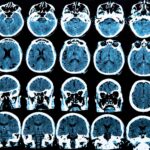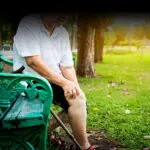National Osteoporosis Awareness and Prevention Month is observed in May every year. It’s a whole month dedicated to raising awareness and spreading the importance of bone health, as well as sharing important ways to prevent this disease. During the month of May, seminars, symposiums, and talks by people living with osteoporosis are conducted all over the country. These events aim to debunk myths about the disease and help others gain an understanding of how to manage osteoporosis in diagnosed patients. Most importantly, you can contribute to many fundraisers to further improve patient care and support for people with osteoporosis.
History of National Osteoporosis Awareness and Prevention Month
Osteoporosis is a disease that has existed since ancient times. Historians discovered 4,000-year-old mummies with ‘Dowager’s hump,’ a common sign of osteoporosis — the first time that bones with holes have been discovered. In 2016, scientists discovered a 2,200-year-old mummy they call ‘Alex,’ with an osteoporosis-weakened skeleton that was determined through a C.T. scan.
In the 18th century, English surgeon John Hunter discovered that every time a new bone emerges from the body, the old bone is either destroyed or reabsorbed. This remodeling state wasn’t recognized as a vital part of the disease back then, but would eventually become a vital process to modern studies of osteoporosis. In the 1830s, French pathologist Jean Lobstein coined the term ‘osteoporosis,’ which means ‘porous bone.’ This was after he discovered a patient’s deteriorated bone was filled with holes that were larger than normal.
In the 1940s, Fuller Albright of the Massachusetts General Hospital noticed that most patients with osteoporosis were women. He suggested a theory that menopause could contribute to the fragility of women’s bones, which led him to the discovery of “postmenopausal osteoporosis” treated with estrogen therapy to prevent further damage by stemming bone loss. In the 1960s, Herbert Fleisch discovered bisphosphonates, a compound that inhibits bone resorption. It contains selective estrogen receptor modulators (SERMs) which help women’s treatment while also blocking breast tumors. However, it was in 1984 when the National Institute of Health highly publicized osteoporosis, putting the disease on a pedestal and paving the way for more research, development, and discoveries in the next few decades. Today, osteoporosis remains one of the most challenging diseases in medicine.
National Osteoporosis Awareness and Prevention Month timeline
Ancient Egyptian mummies from this era are found to have Dowager’s hump, the first sign of osteoporosis.
French pathologist Jean Lobstein coins the term ‘osteoporosis’ after detecting large holes in a human bone.
Fuller Albright associates the postmenopausal phase as a contributor to women’s bone fragility.
Scientists discover the detection of bone loss, which is vital in the diagnosis of modern osteoporosis.
The National Institute of Health declares osteoporosis as a threat to bone health.
National Osteoporosis Awareness and Prevention Month FAQs
Is osteoporosis deadly?
Being diagnosed with osteoporosis is not a death sentence. It is a reminder to take better care of yourself, adjust your lifestyle, incorporate regular exercises, and eat healthier, on top of medications that your doctor will prescribe.
What are the early signs of osteoporosis?
Signs of osteoporosis include receding gums, loss of height, decrease in grip strength, and the Widow’s or Dowager’s Hump.
What is the newest treatment for osteoporosis?
The newest treatment for osteoporosis is Romosozumab, which is a bone-building medication taken through injection.
How to Observe National Osteoporosis Awareness and Prevention Month
Pay a visit to your doctor
It’s important to know that everyone is susceptible to osteoporosis. The best way to prevent this is to go to your doctor for a check-up.
Go for a workout session
One of the best ways to prevent osteoporosis and improve bone density is through aerobic activity. From cycling, and brisk walking, to weight-bearing exercises, there’s no better way to observe National Osteoporosis Awareness and Prevention Month than to improve your health.
Donate to a fundraiser
There are several fundraising organizations you can donate to. These events will raise funds to support campaigns for awareness as well as research and development.
5 Interesting Facts About Osteoporosis
Osteoporosis is more common than you think
According to the National Osteoporosis Foundation, about 10 million Americans have osteoporosis and 44 million have low bone density.
It is preventable
Building strong bones through a good diet, exercise, and an active lifestyle, from childhood to adolescence is important to avoid osteoporosis when one grows old.
It is expensive to treat and manage
Osteoporosis costs the healthcare system approximately $19 billion annually.
Men are late developers
According to Dr. Stephen Honig, Director of the Osteoporosis Center at N.Y.U., men would usually develop symptoms of osteoporosis later than women do.
Importance of vitamin D and calcium
To prevent osteoporosis, adults need 1,000 to 1,250mg of calcium and 1,000mg of vitamin D daily.
Why National Osteoporosis Awareness and Prevention Month is Important
It is educational
Learning the facts about osteoporosis is the best way to prevent and manage the disease. It counters misinformation and myths that could mislead people.
It’s for a good cause
National Osteoporosis Awareness and Prevention Month allows everyone to be philanthropic. Fundraising events and donation drives for this cause are great opportunities for anyone who wants to lend a helping hand.
It’s a reminder for self-care
This month reminds everyone to take care of our bone health. From regular exercise, and a healthier diet, to a change of lifestyle, it’s a good time to make adjustments for oneself, to prevent the disease.
National Osteoporosis Awareness and Prevention Month dates
| Year | Date | Day |
|---|---|---|
| 2026 | May 1 | Friday |
| 2027 | May 1 | Saturday |
| 2028 | May 1 | Monday |
| 2029 | May 1 | Tuesday |
| 2030 | May 1 | Wednesday |











































































































































































